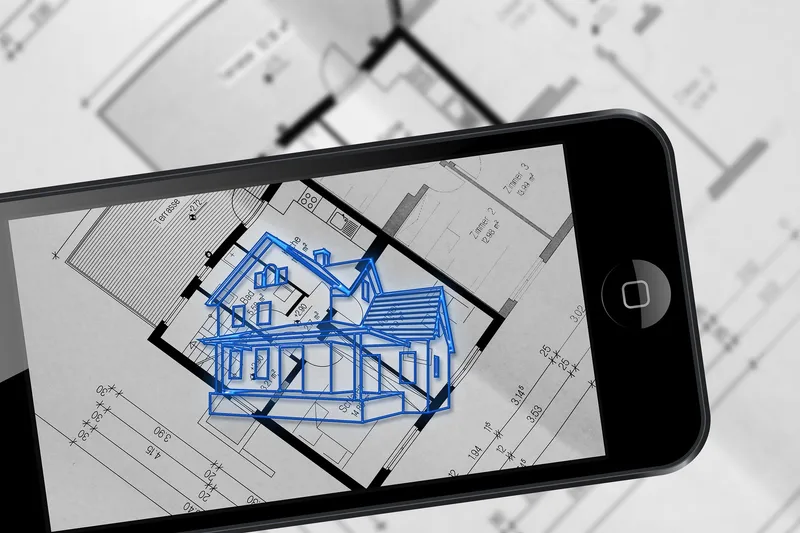

Digital Marketing with AR: 7 Real-World Examples to Inspire
With AR still being a new player in the marketing game, we look at real-world examples that are paving the way for this technology to become fully integrated into digital marketing.

Image by Gerd Altmann from Pixabay
Digital marketing has been growing into new areas over the years—and augmented reality is one sphere that is fast becoming integral to the industry.
Clothing companies, beauty brands, airlines, and automotive sectors, among many others, have been embracing this new technology in their marketing efforts.
With AR still being a new player in the marketing game, we look at real-world examples that are paving the way for this technology to become fully integrated into digital marketing.
AR Advertising
Outdoor advertising is an expensive proposition, but the power of an AR ad campaign can’t be discounted.
Pepsi demonstrated this with its groundbreaking—literally—bus shelter AR campaign.
The company transformed the glass of bus shelters into AR screens that displayed fantastical but realistic imagery.
Occupants of the shelters were blown away by the visuals, and it drew more people to interact with the AR screens and eventually the brand.
This interactivity was also adopted by Timberland—the brand created AR storefronts for customers to ‘try on’ items as they passed the store in a mall.
AR advertising in external spaces can be massively advantageous—people will walk by stores and interact with them, all without making physical contact with people or surfaces.
AR Events
The world isn’t ready to have huge events yet—limitations to how many people can gather are still going to be in place for a while longer.
But events are a huge part of customer acquisition and loyalty campaigns—without them, businesses could lose out on revenue in the future.
However, with AR, brands can create events that allow participants to join in even without being in physical locations.
Virtual events can be organized with ease now—and with much smaller financial investments—via AR apps or dedicated website pages.
This technology gives people access to events that they may not have been able to attend due to physical distance or time zone constraints.
Even social media apps like Snapchat, Instagram, and TikTok now incorporate AR functionality—through stickers and filters—that consumers can use to access events.
And AR also enhances physical events—AR apps can interact with stalls, hoardings, and items to share more product details for event visitors.
Augmented Collaterals
Brands are now successfully incorporating AR into physical collaterals to improve customer experience—and improve brand retention.
Company brochure designs are being integrated with mobile apps that bring articles to life—with these QR codes or AR apps, brochure pages transform into videos or interactive content.
Business cards can also be used with native camera apps or web browsers to display videos and additional information about the cardholder.
AR is also being used to take a customer or client into the next relationship stage with the brand.
Codes can be programmed to open up maps to share the nearest store location or they can trigger a calendar app to book meetings or appointments.
Enhanced collateral can be placed anywhere to act as an incentive for customers to engage with the brand further.
Brand Gamification
Gamification has become a powerful tool for engaging audiences over the past few years—it is a great way to make your digital marketing content more interactive and memorable.
Companies are now creating augmented reality contests that are essentially marketing campaigns with user involvement.
Brands are also adding AR elements to their packaging, pamphlets, and posters that consumers can use to activate games—these are usually controlled by a mobile app.
By creating more exciting and interactive experiences, customers are drawn to the brand, even if they haven’t supported it before.
Gamification not only attracts consumers but also helps with brand recall—the longer a user interacts with the AR game, the faster they recognize the brand at a later point.
All these aspects work together to improve customer retention and to boost revenues.
Product Demonstrations
Imagine if your customer could visualize the interiors and exteriors of your product without ever handling the actual product—that is what augmented reality can achieve for brands.
With AR, automobile manufacturers and retailers have been able to demonstrate exactly how their products function without them needing to go on a test drive, or even leave their home.
Instead of packing in hundreds or thousands of potential buyers into a small crowded space to try out a new car, AR can be used to make the product onboarding process more impactful.
And AR gives brands an additional advantage—they can even show the internal functionality of their product without having to dismantle it.
AR can display a variety of transparencies to show a car engine at work—which would be impossible to show in a physical car.
By using AR in digital marketing, brands are no longer limited by the physical sphere—they can transcend into a wholly digital experience that makes their products more accessible.
Product Trials
The last thing any brand wants is for a customer to make a purchase, not like the product, and then return it—leading to customer churn and loss of revenue.
But asking consumers to try products can be difficult—items like furniture can’t be moved around easily, while personal items like jewelry or makeup shouldn’t be handled too much.
With the use of augmented reality, brands are now able to hold product trials with customers without anyone coming into contact with actual items.
Brands are now creating augmented reality apps that allow customers to see what jewelry, makeup shades, hair color, or glasses would look like on them.
Virtual fitting rooms can be ‘installed’ within one’s home or at a store using an app—these AR rooms interface with a mirror to show customers what an outfit will look like on them.
Home renovation and furniture brands also have the option for customers to use AR to see how items would fit and look in their homes.
Trying out items before one buys them has never been easier—leading to more qualified and confirmed sales for brands from every sphere of the retail world.
Store Enhancements
Social distancing is set to become more of the norm in the future—but in-store purchases are still expected to continue in some form.
To ensure that customers can enter stores safely, brands will have to look into ways to adopt augmented reality technology.
When visiting stores, customers will have questions about products—but going up to a sales agent during these times can be challenging.
Instead, companies can create mobile apps with AR functionality—customers can point the app at a product and see more details about it before making a purchase.
This process mitigates the need for additional human interaction thus keeping customers and salespeople safe.
AR companies are already offering such services to businesses to implement apps with their in-store products and this trend is set to continue into the future.
Conclusion
Digital marketing has incorporated various aspects of the online world but augmented reality could be changing how effective marketing is in the long-run.
With AR applications becoming more user friendly and advanced, marketers will be looking to incorporate AR more often in their campaigns going forward.



![Top 10 Cheap Indian Press Release Distribution Services [Updated]](https://images.yourstory.com/cs/1/b3c72b9bab5e11e88691f70342131e20/LOGO-DESIGN-PR-INDIA-WIRE-03-1595693999405.png?mode=crop&crop=faces&ar=16%3A9&format=auto&w=1920&q=75)



